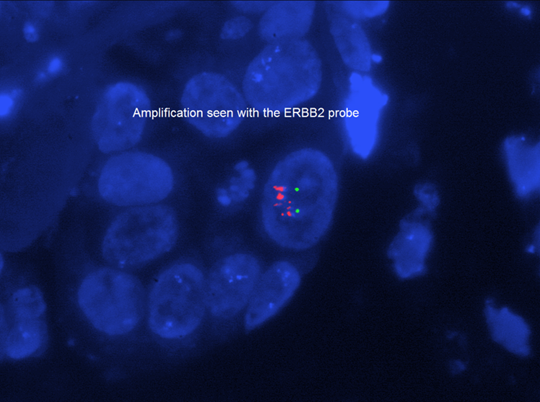Breast Cancer
 The incidence of breast cancer has increased recently especially among young women. The lifetime breast cancer risk for a woman reaching 80 years of age is about one in ten. Although many cases are sporadic, about 20% occur in familial aggregates, and perhaps 5%-10% show a segregation pattern indicative of an autosomal dominant trait. In addition, benign breast conditions exist that are associated with an increased risk of carcinoma development.
The incidence of breast cancer has increased recently especially among young women. The lifetime breast cancer risk for a woman reaching 80 years of age is about one in ten. Although many cases are sporadic, about 20% occur in familial aggregates, and perhaps 5%-10% show a segregation pattern indicative of an autosomal dominant trait. In addition, benign breast conditions exist that are associated with an increased risk of carcinoma development.
Benign Breast Disorders:
Hyperproliferative breast disorders of both the epithelial and connective tissues are common. Two predominantly epithelial benign hyperproliferations have been karyotipically characterized by chromosome banding analysis. The karyotypic abnormalities usually found are quite complex. Nevertheless, specific chromosome abnormalities in these tumor types are so consistent that they can be used to discriminate between tumor types and subtypes that are indistinguishable by histological examination alone.
Breast Carcinoma:
The studies of tumor cytogenetics using short term culture are likely to yield cytogenetic information in a high percentage of cases.
One of the prognostic markers in karyotypically complex carcinomas is the presence of gene amplification. This process is often indicated by the presence of double-minute chromosomes, homogeneously staining regions, or abnormally banded regions. Gene amplification usually indicates more aggressive disease and a poorer prognosis.
With fluorescent in situ hybridization (FISH) techniques, chromosomal aberrations associated with a specific tumor subtype, amplification of certain oncogenes, and deletion of certain tumor suppressor genes can be detected directly on the paraffin embedded tissue of excised tumors.
Breast Carcinoma:
HER-2/neu:
The oncogene HER-2/neu, which is present as a single copy in normal cells, may be amplified 10-100 fold in approximately 30% of breast tumors. It has been mapped to chromosome 17 in the region 17q11.2-12.This phenomena is associated with poorer clinical response to treatment and shortened survival times. The HER-2/neu cosmid probe can be used to identify the amplification of the gene in paraffin embedded tissue sections.

 Institute of Genomic Medicine
Institute of Genomic Medicine